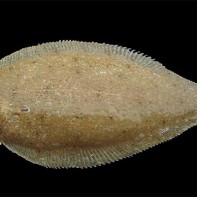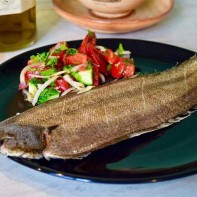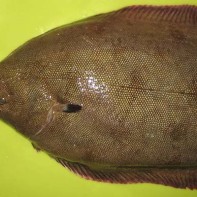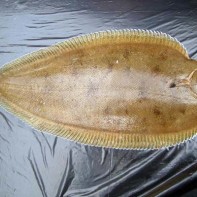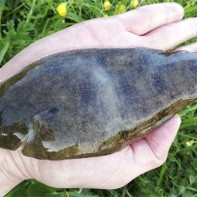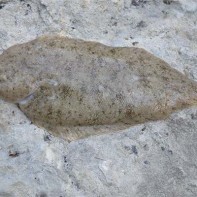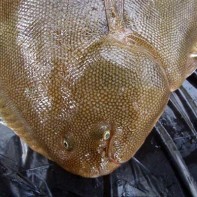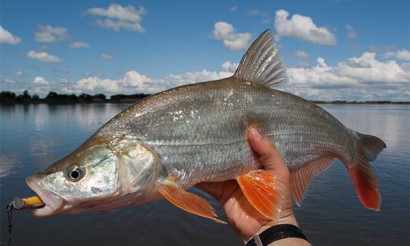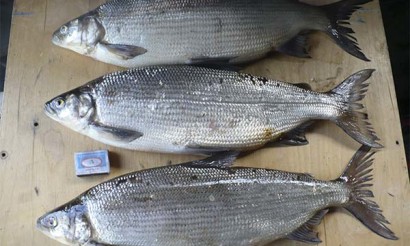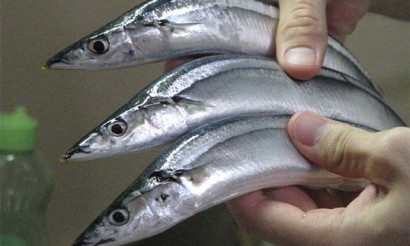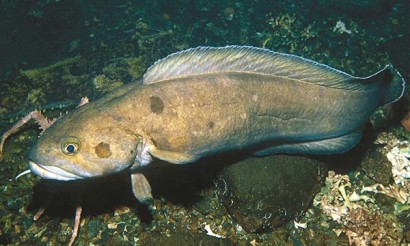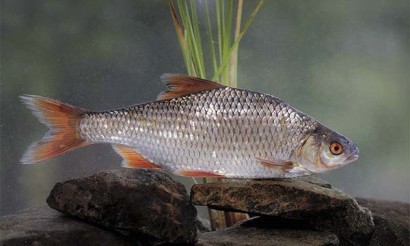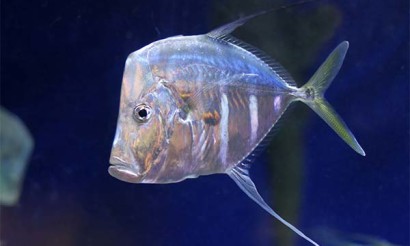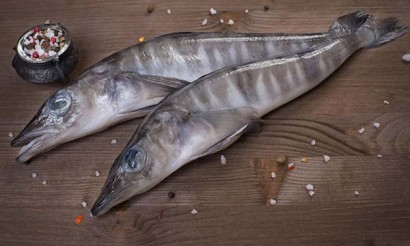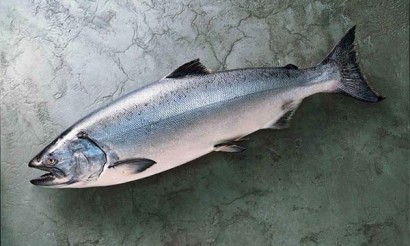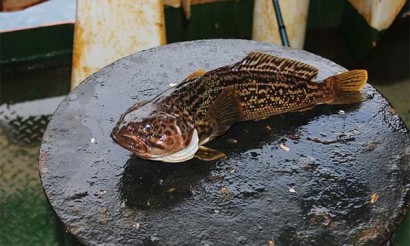Sea tongue fish: useful properties and recipes for cooking
The exquisite meat of sole is ideal for steaming and frying. In Europe, it is difficult to find a decent restaurant, whose menu does not include dishes from this fish. Not only is sea tongue delicious, it has many health benefits, boosts health, and helps get rid of excess weight.
- Tongue of the sea: what kind of fish it is, how it looks and where it lives
- How does it look?
- Where does it live?
- What does it feed on?
- Breeding process
- Variety
- Fishing value
- How to catch the sea tongue: when, where and on what?
- When to catch
- Where to catch
- What to catch
- How does sole differ from other fish
- From pangasius
- From flatfish
- From halibut
- From tilapia
- Composition and calories
- What is the usefulness of European sole meat
- General benefits
- For Women
- For Men
- In Pregnancy
- For breastfeeding
- Slimming
- For children
- Harm and Contraindications
- How to choose and store
- Where to buy and how much does it cost?
- How to peel and dress
- How to defrost a fillet properly
- How to cook sea tongue: Recipes
- In the oven
- In the frying pan
- On the grill or barbecue
- In a multicooker
- Sea Tongue Fish Cutlets
- Recipe of soup of European sole
- Q&A
- What does sea tongue taste like?
- What does it smell like?
- Is it greasy or not?
- Are there many bones in the fish?
Tongue of the sea: What kind of fish is it, how does it look and where does it live?
The outwardly unattractive sea tongue or European solea Solea solea belongs to the family Soleae, order Flounderidae. It can mimic its environment and is active at night. During the day lies at the bottom, buried in the sand.
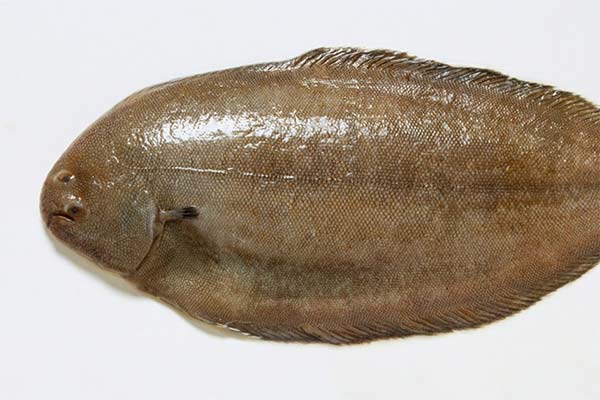
Saltwort is adapted to life in reservoirs with different salt contents (10-35 ppm) and different temperatures (8-24°C). In warm seas, the fish develops faster and reaches larger sizes. Pomfrets are well tolerated by the desalinated water of estuaries and estuaries, where they often go in search of food.
In Russia, the sea tongue is an object of amateur fishing; it has no economic value. Comes to stores from Vietnam in fresh-frozen, smoked or salted form.
How it looks
The maximum length of the fish is 75 cm, the average - 25-30 cm. The flattened body in the form of an elongated oval is covered with fine, rigid scales. The dorsal and anal fins wrap around the body from head to tail stem. Tail short, rounded without notch. The snout is arched over a small mouth.
The blind side of the representative of the flatfish is light-colored. The right side, where both eyes are located, is colored brown with dark spots or marbled pattern.
The European sole is called nasal because the front sprawling nostril on the blind side of the body resembles a rosette surrounded by a fringe.
Where does it live
The sea tongue is common throughout the Mediterranean Sea, the eastern Atlantic from Norway to West Africa. Less common in the Sea of Japan, Black Sea and Sea of Okhotsk.
The European sole prefers even sandy or muddy bottoms at a depth of 10-30 m. In the winter, it goes away from the shore and descends to a depth of 200 m.
What does it feed on?
Sea tongue feeds on bottom organisms mainly at night, looking for them with the help of a developed sense of smell in shallow waters.
Its diet includes:
- small mollusks;
- crustaceans;
- polychaetes;
- polychaetes;
- juvenile gerbils.
The greatest weight gain occurs in the fall after the spawning period.
Reproductive process
The European sandpiper reaches sexual maturity at the age of 7-17 years. The spawning period stretches from March to September, depending on weather conditions. Female sea tongue is ready for reproduction at a water temperature above 15 degrees. Caviar is hatched in portions. Fertility is from seven to a hundred thousand small eggs per season.
Larvae hatch after a couple of weeks. In the beginning of development, the fry have a standard symmetrical body shape. As they mature, they undergo a transformation. The left eye moves to the right side, which becomes the back. The left side turns into the abdomen.
Varieties
Ichthyologists distinguish 3 types of sea tongue:
- The blue-crowned or black one is distinguished by its dark skin color and impressive size. With a body length of up to one and a half meters, this subspecies weighs up to 45 kg.
- The white-toothed saltwort grows up to three meters with a body weight of up to three quintals.
- The arrowtooth species, including two subspecies (Asian, American) is the smallest. Its representatives grow to 0.7 m and weigh a maximum of 3 kg.
Fishing value
The destructive barbaric methods of fishing with bottom trawls and snorkelers, the use of satellite navigation, three-dimensional sonar, and digital maps have led to a decrease in the population of the sole.
Since 2014, the European sole has been classified as an endangered species.
Rare for Russian waters, the sea tongue in the Black Sea is excluded from the commercial fish species. Because of this, it happens at fish markets that unscrupulous sellers pass off pangasius as sole.
In industrial scale, taking into account the restrictions, representatives of flounder are caught in the Mediterranean countries, Denmark, Norway, England, USA, Vietnam.
How to catch sole: when, where and on what?
European sole are caught from the shore by casting, by spinning from a boat or on a drift boat. The place and time of fishing is important for successful fishing, given that the fish spend most of the day on the bottom, burrowing in the sand.
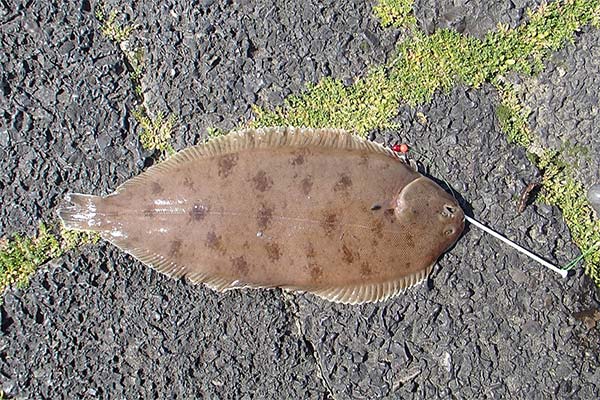
When to fish
In summer, when the water warms to high temperatures, the sea tongue lives in shallow water closer to the shore. In winter, at temperatures below +8 degrees goes to the depths. Amateur fishing begins in May and ends in November. The dead season is December-February. In March and April, the fish are not active.
The most frequent bites occur from 8 pm to 2 am and early in the morning. Flounder are well caught in the calm after the storm, when the mud has not yet had time to sink to the bottom.
Where to Catch
European sole are caught from the shore, piers, cliffs, boats and boats. The usual habitat is a depth of 10-60 m. From five to seven in the morning the fish rise from the bottom closer to the surface.
What to catch
From the shore, a pier, the sea tongue is caught with a rigid telescopic rod up to 6 m long. From the boat the fish is caught with a dunking rod, consisting of a 2-3-meter rod, inertial reel with a transparent line of diameter 0.3 mm. By line attached weight, two 15-cm leash smaller section, hook number 6.
Bread balls soaked in flavorful attractant are used for bait. Inside them put pebbles so that the bait sinks to the bottom and disintegrates.
The most working bait is foulade, which lives in the solid ground, stones. Pieces of bivalve mollusk, planted in a figure eight, tightly seated on a hook, do not fly off during long throws. In addition to foulade as bait, use:
- mollusk patella;
- hermit crayfish;
- small crabs;
- shrimp;
- large worms;
- pieces of haddock, haddock, sardines.
From artificial bait, the fish reacts to medium-sized twisters, wobblers.
How sea tongue differs from other fish
When choosing a product in retail outlets, buyers are often lost and are not sure if they are buying European sole. In order not to buy another fish instead of sea tongue, it is necessary to study the information about the distinctive features of other species that are similar to each other.
From Pangasius.
Carcass Pangasius Thicker and softer. The color of the meat may be grayish. The unobtrusive marine aroma of the salt contrasts with the pungasius' pungent, unpleasant smell.
In addition, the latter is fattier. Low-quality cheap fish is recognizable by its fatty layers.
From flounder.
The differences between European sole and flounder:
- Smaller fin width;
- The body is elongated oval rather than diamond-shaped;
- the fillet is pinkish or creamy, not marbled without streaks.
In taste, the differences are difficult to determine. Gourmets claim it is more delicate in the soles. The meat consistency of sole is denser than the soft, watery flesh of flounder.
From halibut.
Halibutbelonging to the Flounder family, is much larger than a sole in the Saltwort family; accordingly, its steaks, fillet pieces are larger. The color of halibut on the eye side is black or monochromatic, dark brown.
On the sea tongue, the eye side of the hull is colored brown to beige with dark spots. The smell of the sole is more neutral, and the meat is more tender.
From tilapia.
In freshwater tilapia native to Africa has a tall, laterally compressed body. Externally, the fish resembles perch and is farmed artificially on a large scale. In contrast to the carnivorous European sole, it feeds exclusively on plant food and has a foul, musty odor.
The nutritional value of meat also differs. Tilapia has less unsaturated fats and vitamins. Meat representatives cichlidovyh white, the taste resembles crucian carp.
Composition and calories
European sole fillets are rich in amino acids, nicotinic acid, phosphorus, magnesium, potassium, cobalt, iodine, chromium, fluorine. The fish contains alpha-linolenic, linoleic, arachidonic unsaturated fatty acids that prevent diabetes, heart failure, gaining excess weight, and joint diseases.
Content of vitamins, minerals in 100 grams of edible part of sea tongue:
Vitamins:
- Nicotinic acid - 2.9 mg.
- Riboflavin - 0.05 mg.
- C - 2,3 mg.
- A - 0.02 mg.
- Thiamine - 0.02 mg.
Micronutrients:
- Cobalt - 0.05 mg.
- Chromium - 0.06 mg.
- Iodine - 0.05 mg.
- Fluorine - 0.43 mg.
- Copper - 0.06 mg.
- Zinc - 0.7 mg.
- Molybdenum - 0.004 mg.
- Iron - 0.9 mg.
- Manganese - 0.05 mg.
Macronutrients:
- Phosphorus - 150 mg.
- Sulfur - 180 mg.
- Magnesium - 60 mg.
- Potassium - 300 mg.
- Sodium - 130 mg.
- Chlorine - 165 mg.
- Calcium - 30 mg.
Fat content of 100 grams of the product - 10.3, 5.2, 0 g, respectively. The caloric value is 88 kcal.
How is the meat of the European saltwort useful?
General benefits
Unsaturated fatty acids in the fish regulate the functions of all organs and systems, protect against infections of the respiratory system, neutralize the action of carcinogens, prevent the formation of cholesterol plaques, narrowing the lumen of blood vessels.
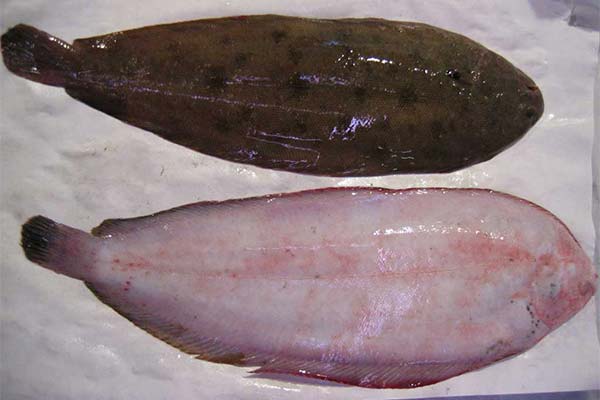
Useful actions of European salts:
- Prevents neoplasms in the urogenital system, intestines.
- Improves immune status, resistance to catarrhal infections.
- Reduces high blood pressure.
- Stimulates the synthesis of the "hormone of happiness," improving mood.
- Regulates the nervous system, eliminates anxiety, depression.
- Participates in hematopoiesis, improves blood flow, regulates blood clotting.
- Prevents the formation of "bad" cholesterol.
- Increases hemoglobin levels, prevents iron deficiency anemia.
- Speeds up the conduction of nerve impulses.
- Supports the health of the gastrointestinal tract, mucous membranes, skin.
- Reduces the period of rehabilitation after surgery, serious illness, injury.
- Enhances the effect of insulin, reduces glucose tolerance.
- Regulates electrolyte, acid, and water balance.
- Mineralizes bone, tooth enamel, maintains the structure of joint cartilage.
Boiled, baked meat is recommended for the elderly to conserve mental clarity, strong bones, improve joint mobility.
For women
The benefits of European Solea meat for women:
- Supports the health of female reproductive organs;
- prevents the development of breast cancer;
- Reduces the intensity of menstrual pain;
- Stabilizes the psycho-emotional state of PMS;
- Prevents osteoporosis, limb fractures.
Complex vitamins, minerals in the salt care for women's beauty, strengthen hair roots, nail plates, support youthful skin.
For men
Useful actions of the sea tongue for men:
- Prevents heart failure, rhythm disturbances, atherosclerosis, vascular accidents.
- Increases stress resistance.
- Reduces the likelihood of neurosis.
- Increases physical endurance and performance.
Fluorine and magnesium stabilize erectile function, and zinc improves the quality of the seminal fluid.
Pregnancy.
Pregnant product, rich in protein and minerals, helps to form all the organs and systems in the fetus, to support their body, which is experiencing increased stress.
Future mothers who consume fish have a better sleep and appetite. They are more energetic, less tired and are not prone to mood swings.
When breastfeeding.
When there is a lack of calcium for the production of breast milk, the body takes the macronutrient from the bones. In addition, breastfeeding women are deficient in protein, iodine, Omega-3, which are rich in the meat of the sea tongue.
European soybean infuses the body with energy, improves metabolism, blood circulation, prevents postpartum depression, fights insomnia.
When losing weight.
Low-calorie nonfat product is recommended by nutritionists to include in the menu when shedding excess weight, to prevent obesity.
Salt Meat:
- Improves digestion, participates in the synthesis of some enzymes.
- Normalizes metabolism, including fat metabolism.
- Detoxifies.
- Supplies the body, weakened by unbalanced diets, with nutrients.
When losing weight, it is better to steam, stew or bake fish in foil in the oven.
For children
Children enjoy eating fish-free, boneless sea tongue meat. Low-fat kind of fish can be included in the infant diet in small quantities.
Solea supplies the child's body easily digestible quality protein necessary for growth, normal development.
Phosphorus and calcium in the product form the musculoskeletal system and prevent rickets. Iodine takes care of the health of the thyroid gland, stimulates brain function, improves learning ability.
Harms and contraindications
Sea tongue is contraindicated in allergies to fish protein, individual intolerance to the product. From fried, salted and smoked fish should be refrained from at exacerbation of pancreatitis, gastritis, peptic ulcer and intestinal disease, pyelonephritis. People with hypertension and a tendency to edema should be careful.
Particularly dangerous is the fish grown artificially in the Vietnamese river Mekong. This body of water is known for its unfavorable environmental situation. In addition to heavy metals, pathogens, the meat of the salt is saturated with growth hormones.
How to choose and store
Recommendations for selecting quality fish:
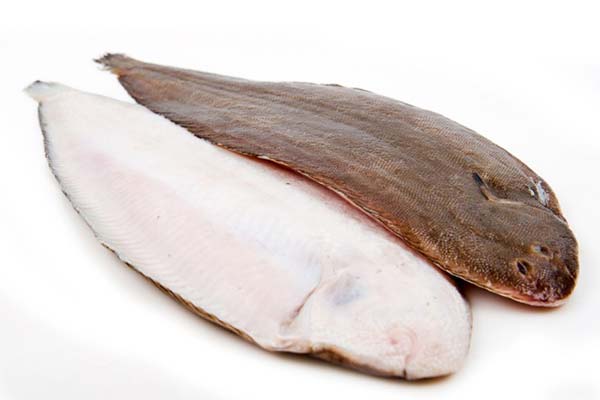
- Lift the gills, take a sniff. If the smell is pungent, unpleasant, refuse to buy.
- Assess the appearance. Signs of fresh fish - clear eyes, red gills, moist scales, smooth skin without mechanical damage, growths.
- If you notice sticky mucus on the scales, cracks on the glaze or a bent dry tail, you have a sea tongue that is not the first fresh.
- Check the fillets of sea tongue for density and firmness. Press your finger on the surface, pull it away sharply. If the dent quickly disappeared, the meat is fresh.
- The color of the flesh is pinkish to beige, monochromatic with no red spots or streaks.
- Broken tail, fins indicate improper transportation, and cloudy, rough ice glaze indicates repeated freezing.
- If you can see layers of fat in the fillet, it is not a sea tongue but another kind of fish.
Gutted, wrapped in clingfilm on the refrigerator shelf salmon is stored for two days. In a domestic freezer does not spoil for 3-4 months.
Where to buy and how much does it cost
Freshly frozen gutted fish and fillets are sold in large chain supermarkets, specialized fish stores, selling online marketplaces.
Carcasses or fillets of freshly frozen fish, artificially raised in Vietnam, are sold for 250-320 p. Wild chilled or frozen sea tongue from Morocco, Canada costs 1700-1800 p. per 1 kg.
How to peel and dress
Stages of European sole carcass processing:
- in a basin of water, peel the scales, starting at the tail;
- Cut off the head so that the belly is exposed;
- Remove the viscera, rinse, dry with paper towels;
- Trim off long fins and tail with kitchen scissors;
- Remove the skin, gripping and pulling it from the tail to the head;
- Parallel to the cutting board, cut the fillets from the backbone.
To clean, cut the sea tongue, choose a wooden cutting board, a sharp, narrow, flexible knife.
How to defrost a fillet properly
To preserve the delicate sea tongue meat's dense structure and maximum nutrients, it should not be defrosted in water or in a microwave oven.
After removing the carcass from the freezer, put it on the refrigerator shelf for slow thawing.
How to cook sea tongue deliciously: recipes
In home conditions, a variety of dishes are prepared from the dietary meat of the European salt. The tongue is fried in batter or breading in a pan, coals, baked with vegetables, poached in water, steamed.
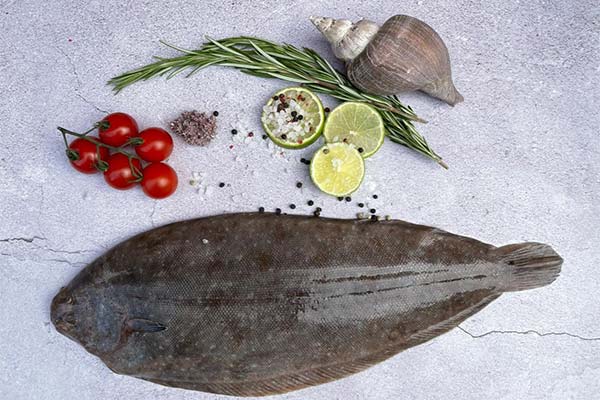
Fish can be cooked into a delicious fish soup. It is important to observe the temperature and cooking time, so as not to dry out the delicate dietary meat.
In the oven
To bake 0.5 kg of fillet of sea tongue, prepare:
- 7 medium-sized tubers of potatoes;
- one onion;
- 5 tbsp. mayonnaise;
- salt;
- mixture of spices - barberry, turmeric, black pepper, red pepper.
How to prepare:
- Cut the fillet into cubes of two by two centimeters.
- Peel potatoes, cut into smaller cubes. Chop the onion.
- Combine all ingredients. Add salt, spice set, mayonnaise, mix.
- In a baking dish put a sheet of foil. Place fish fillet and vegetables on it. Wrap up, pinch the edges.
- Bake for 40 minutes in an oven heated to 200 degrees.
The dish is quite independent and does not require a side dish. It can be served with a salad of fresh vegetables.
In a pan
Wash and dry the fillets and put them in a bowl. Add salt, pepper, pour lemon juice. After half an hour slice the salt into slices, roll in wheat flour.
Fry the fish in a pan in glowing oil on both sides until tender. Fry onion rings in the same oil.
Serve the finished solea with onions, mashed potatoes, pickles.
On a grill or barbecue
For fish kebabs you will need:
- 3 slices of fillet of European soybeans;
- 2 tbsp. vegetable oil;
- ground black pepper, salt, smoked paprika.
Preparation:
- Cut each piece of fillet lengthwise down the center. Salt the fish on both sides, sprinkle with pepper and paprika.
- Brush each strip with vegetable oil using a cooking brush.
- After 20 minutes put long pieces of fillet on skewers.
- Roast on coals, periodically turning until ready.
Serve Mexican vegetables, french fries, pita bread, greens.
In the multicooker
Quick and easy to make soy in the multicooker.
The set of products:
- 1 kg of fish;
- 4 tbsp. mayonnaise;
- 2 onions;
- 4 carrots;
- 40 ml of lemon juice;
- pepper, salt.
Method of preparation:
- Slice fillets into portions. Salt and pepper.
- Cover with lemon juice.
- While sea tongue marinade, peel, dice onion, grate carrots.
- Roast the vegetables, turning on the mode for baking.
- Pour the mayonnaise over the fish, stir, and place it in the bowl.
- Close the lid, cook for 40 minutes in "Stew" mode.
Cooked in a multicooker fish - soft, appetizing, melting in the mouth.
Sea tongue fish cutlets
According to hostesses who practice this recipe, the cutlets turn out very tasty, children like them because of the lack of fish flavor.
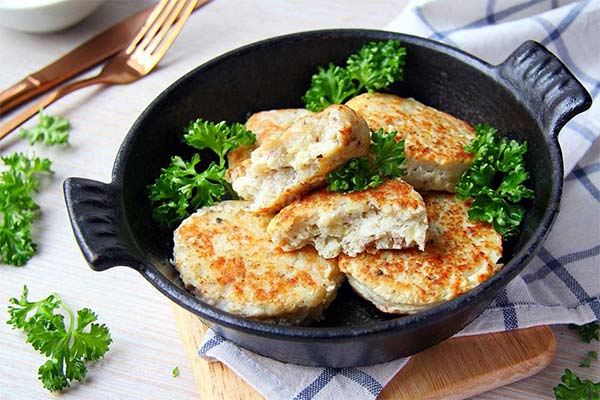
Ingredients:
- 1 kg of fillet of solea;
- 3 tbsp. semolina;
- one egg;
- two onions;
- 3 g salt, pepper;
- 100g breadcrumbs;
- oil for frying.
How to prepare:
- Pass the onion, fillet of sole through a meat grinder.
- Mix in semolina and half of breadcrumbs. Add egg, salt and pepper. Thoroughly knead it.
- Leave the fish mixture to soak in seasonings for half an hour.
- Form cutlets with wet hands.
- Heat a pan with vegetable oil.
- Roll the meatballs in breading. Fry first on a high heat, then on a low heat until cooked.
Serve juicy tender cutlets with mashed potatoes, crumbly rice, greens, fresh vegetable salad.
Recipe of soup from European sole
For ukha from 0.5 kg of sea tongue fillets you will need:
- three onions;
- one carrot;
- two tubers of potatoes;
- 30 g of parsley greens;
- 2 bay leaves;
- pepper, salt.
Cooking steps:
- Put a pot with two liters of water and one washed but not peeled onion on the stove. Salt.
- Chop the remaining onion in cubes, carrots in half circles, potatoes in brusks.
- After boiling water, load vegetables, bay leaf, peppercorns.
- Cut the fish fillets into small pieces. Add them to the vegetable broth after 5 minutes.
- While the fish soup is boiling, chop the parsley.
- Add the parsley two minutes before it begins to cook.
- After turning off the stove, leave the fish soup to infuse for 10-15 minutes.
When serving add to the plate a slice of lemon and dill greens.
Q&A
Fish lovers and healthy eaters are interested in the gastronomic characteristics of the delicacy fish.
What does sea tongue taste like?
Tender, almost transparent meat of sole without a layer of fat has a refined original taste, melts in the mouth. Not without reason it is prized by European restaurateurs.
What does it smell like?
Fresh fish has a faintly pronounced marine aroma. After heat treatment, European sole smells very appetizing.
Fatty or not?
In 100 grams of sea tongue contains 5% of fats. This means that the product belongs to the category of medium fat content.
Are there many bones in the fish?
There are not many bones in fish, they are thin and soft. After stewing or frying they are difficult to find at all.
In Russia, sea tongue has been undeservedly put on the list of species with no economic value. Fish should be eaten at least once in a while to enjoy the delicate taste of tender juicy meat, and at the same time to strengthen the immune system, maintain health, improve your mood.
«Important: All information on this site is provided solely for introductory purposes. Consult with a health care professional before using any of our recommendations. specialist. Neither the editors nor the authors shall be liable for any possible harm caused by materials."

